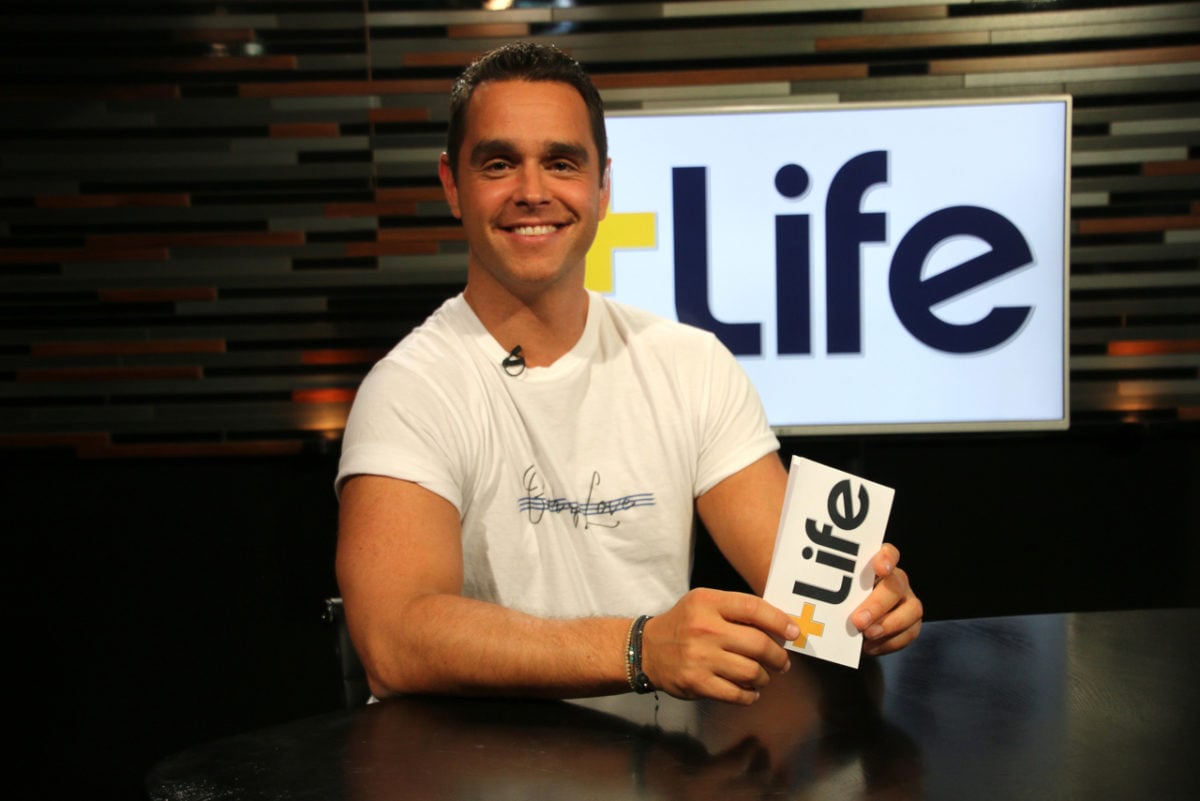
Karl Schmid is the editorial director of +Life, a digital platform that shares information and inspiration for people living with HIV and the people who support them. Its mission is to end the stigma associated with being HIV positive. Photo: +Life
A new report found that HIV stigma and HIV misinformation remain high among Americans.
However, some of the best ways to combat these problems are building trust between doctors and patients, having honest and open conversations, and giving accessible information.
In its second annual State of HIV Stigma Study released Thursday, LGBTQ+ media advocacy group GLAAD found that the stories and voices of people living with HIV are not prioritized enough to decrease the stigma around the HIV epidemic.
The study measured American adults’ attitudes toward HIV and those living with HIV. It was funded by Gilead’s COMPASS Initiative, which addresses the HIV epidemic in the South. Gilead also manufactures the HIV prevention medication PrEP.
The study was conducted through an online survey between Jan. 14 and 29, among a sample of 2,517 U.S. adults who were 18 years or older.
Karl Schmid talks +Life, being HIV positive and ending HIV stigma
HIV Stigma Study
GLAAD’s survey found that only 48 percent of adults reported feeling knowledgeable about HIV, and that number is three points lower than last year’s report.
“For the second year in a row, we are finding that HIV stigma remains high while HIV knowledge remains low amongst Americans. We have to think critically and intentionally about how we truly equip and engage everyday Americans with the facts, resources, and scientific advancements about HIV if we want to end the epidemic,” said GLAAD associate director for communities of color DaShawn Usher.
Stigma and misinformation about HIV is still widespread.
Only 42% of respondents knew that people living with HIV cannot transmit the virus while on a proper treatment regimen.
When treated properly, people living with HIV can live long and healthy lives, and treatment for HIV can suppress the virus to where it’s undetectable, which means it is also untransmittable. This concept is known as U=U, or undetectable equals untransmittable.
HIV vaccine using mRNA technology being developed by Moderna
A majority of people did agree that stigma exists around HIV.
- 53% of non-LGBTQ+ people said they would be uncomfortable if a medical professional had HIV.
- 43% of non-LGBTQ people said they would be uncomfortable interacting with a hairstylist with HIV.
GLAAD found that the highest level of discomfort around those living with HIV was highest in the South, 54%, and lowest in the West, 45%.
The Southern AIDS Coalition, the Center for Health Policy, and Inequalities Research at Duke University, and the Duke Global Health Institute recently released a report, titled “HIV in the U.S. Deep South: Trends from 2008-2019.”
It found that while the Deep South’s nine states possess 29% of the country’s population in 2019, it accounted for almost 44% of new HIV diagnoses.
The study also found that 56% of non-LGBTQ+ respondents to the survey noted seeing more stories about those living with HIV in the media.
“We must hold the media accountable to the 1.2 million Americans living with HIV who are not seen, represented, or discussed. Their stories matter and are beyond worthy of being told,” Usher said.
Showrunner Neal Baer talks ‘Designated Survivor’ HIV undetectable story
Strategies to Combat HIV Stigma
The Gilead COMPASS Initiative suggested specific actions to reduce stigma.
Provide tangible and accessible information to counter misinformation
“People fear what they don’t know,” said Kia Colbert, director for the COMPASS Coordinating Center at Rollins School of Public Health at Emory University. “Stigma is rooted in fear, thus for every accurate piece of information and knowledge that is available, there is an equal amount of misconceptions based on preconceived notions about the virus.”
Build trust between healthcare provider, patients
“The doctor-patient relationship — like all relationships — takes work,” said Ian L. Haddock, founder and executive director of The Normal Anomaly Initiative. “Each person comes with a wealth of knowledge – one with medical experience and the other with lived experience. Physicians often don’t recognize the patient’s expertise.”
Confront fear with facts, honest conversation
“People still see HIV and AIDS as a death sentence,” said Tatiana Williams, Co-Founder & Executive Director of Trans Inclusive Group. “We have to normalize the conversation surrounding HIV, and how HIV impacts the entire community, not just certain communities and-or sub-groups.”
Apply lessons from COVID-19 response
“The urgency of addressing COVID-19 revealed our ability to swiftly build infrastructure for a response that is comprehensive and accessible,” said Dafina Ward, executive director of Southern AIDS Coalition. “COVID-19 has provided an opportunity for dialogue regarding transmission of viruses, vaccines research and more, while making more people receptive to the conversation. COVID-19 has also demonstrated the layered impact of diagnosis on all aspects of a person’s life, and the inequities that must be addressed to ensure that every person impacted receives the same level of care.”
Consider internal, external factors
“It’s important to remember that stigma is not an issue that only manifests itself externally,” said Sandra C. Melvin, chief executive officer of the Institute for the Advancement of Minority Health. “We have to think about the ways it impacts one’s mental health and their self-esteem. We must remember, even with all the COVID-19 conversations, that discrimination and human rights violations are major factors that drive HIV stigma in today’s society.”
